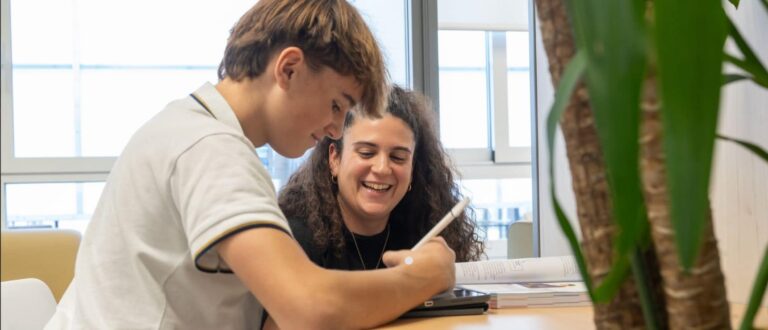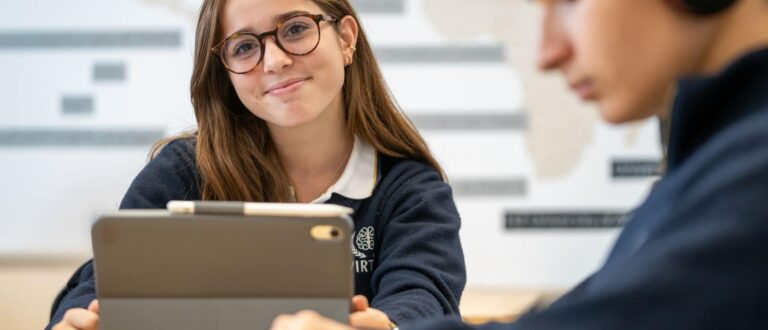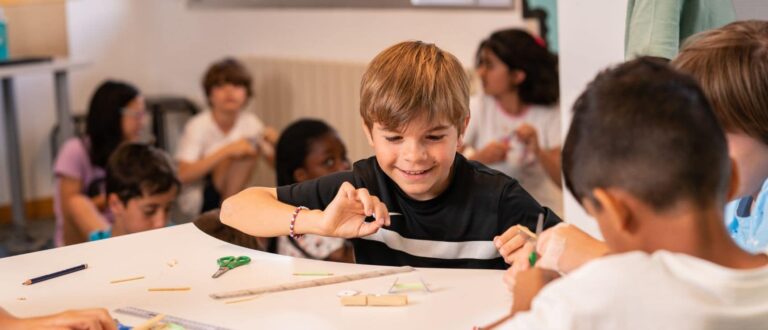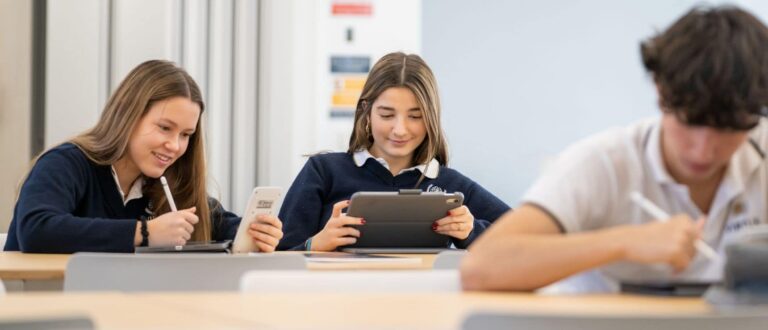St PETER’S SCHOOL, alongside families, takes on the responsibility of educating our students in the conscious and responsible use of devices and digital content. Last year, we initiated a reflection process on the impact of technology on the younger generations, the so-called digital natives, and the role that families and schools should play in their ethical and cognitive development.
This process began with a roundtable discussion, during which several parents shared their concerns and offered several solutions and proposals. Based on their contributions, we reviewed and updated our device policy, adjusting it to the current concerns, challenges, and needs.
The Technological Landscape
While technology offers significant advantages for children, such as enhancing cognitive skills and fostering critical thinking, it also poses risks. It’s essential to guide children in their use of screens, establishing clear boundaries to ensure their safety and well-being. Family interaction around screen content can amplify benefits, allowing children to navigate the digital world consciously.
Benefits of Screen Use
Research indicates that screen use can promote family bonding and cognitive development. Educational content can improve academic performance and stimulate creativity. Digital competence is increasingly crucial for success in today’s job market, equipping students with necessary skills for a tech-driven future.
Potential Benefits Include:
- Family Connection: Engaging in discussions about technology can strengthen bonds.
- Adolescent Well-being: Moderate screen use appears less harmful for older children, providing social interaction through digital platforms.
- Cognitive Development: Educational games enhance skills like visual processing and literacy, enriching learning experiences.
- Competency Advantage: Digital literacy is essential for future success, as students must navigate an evolving technological landscape.
Risks of Screen Use
Despite the benefits, there are notable risks associated with excessive screen time, particularly for younger children. Concerns include disrupted sleep patterns, sedentary behavior, and potential mental health issues.
Key Risks Include:
- Sleep Disruption: Screen use, especially before bedtime, can lead to difficulties in falling asleep and shorter sleep durations.
- Mental Health Issues: Excessive screen time has been linked to depressive symptoms, particularly from inappropriate content exposure.
- Language Development: For children under two, screen time may negatively impact language acquisition and development.
- Behavioral Problems: High screen usage is correlated with attention issues and hyperactivity in young children.
Guidelines from various health organizations recommend limiting screen time based on age, emphasizing the need for a balanced approach that includes physical activity and family interaction.
Guidelines for Screen Time
To mitigate risks, health authorities recommend:
- No screen time for children under 2 years.
- Limit screen use to 1 hour for preschoolers and 2 hours for school-aged children.
- Establish screen-free times, such as during meals and before bedtime.
Family involvement is crucial. Parents should set negotiated screen time limits and engage in discussions about usage and content, helping children reflect on their technology habits.
Interventions and Healthy Habits
Interventions aimed at improving children’s relationships with technology should go beyond merely reducing screen time. Instead, they should focus on promoting healthy behaviors and family cohesion. Strategies include:
- Encouraging physical activity and outdoor play.
- Maintaining a consistent sleep schedule.
- Promoting a healthy diet and avoiding screens during meals.
- Engaging in non-screen activities such as reading or arts.
- Maintaining open communication about online safety.
These approaches foster a holistic view of well-being, ensuring that technology is integrated into children’s lives in a balanced way.
Conclusion
In summary, while technology can enhance learning and development, it also poses risks that require thoughtful management. Educators and parents must collaborate to create an environment that leverages technology’s benefits while mitigating its potential downsides. By adopting a proactive stance, emphasizing ethical and competency-based education, we can empower children to navigate their digital landscape safely and responsibly. Thus, the goal is not to eliminate technology but to ensure it serves as a tool for positive growth and development.







